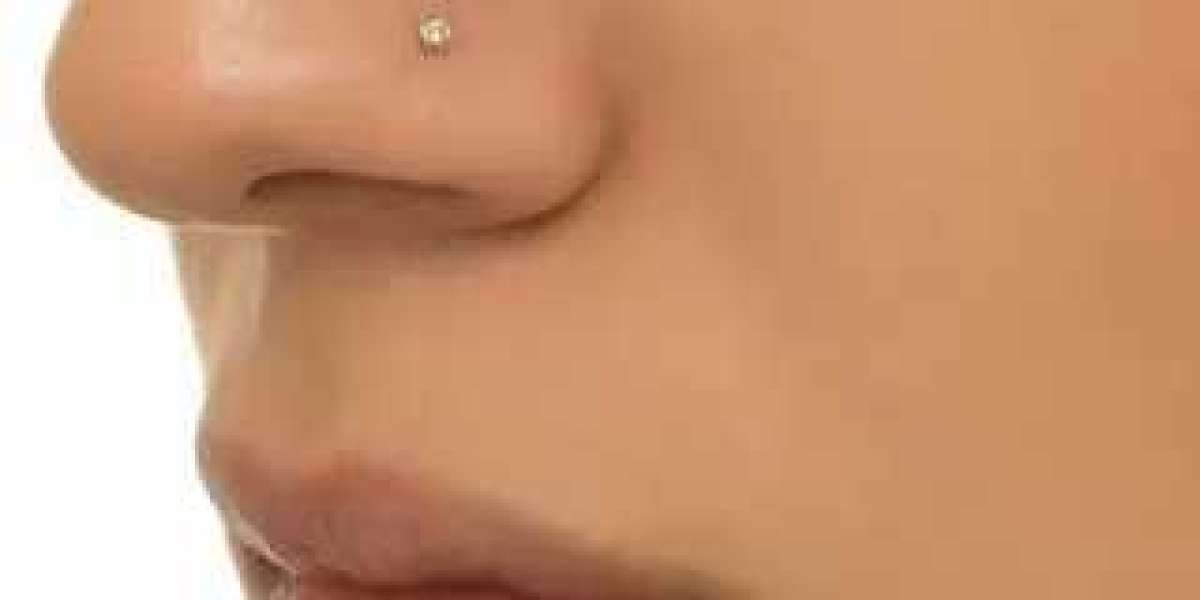Nose piercings are a popular form of body modification, but like any piercing, they require proper care to heal correctly. One common issue that can arise is the sinking or embedding of the jewelry into the skin. This guide will help you understand the causes of nose piercings sinking and provide actionable advice on how to prevent nose piercing from sinking. By following the right aftercare steps and making informed choices, you can keep your piercing healthy and avoid complications.
Why Does a Nose Piercing Sink into the Skin?
A sinking nose piercing is often the result of several factors, including improper jewelry fit, swelling, or poor aftercare. Understanding the causes can help you prevent further issues and ensure proper healing.
Improper Jewelry Fit
One of the main causes of nose piercings sinking is wearing jewelry that is too small or tight. When the jewelry is not the correct size, it puts pressure on the surrounding skin, causing the piercing to embed deeper into the tissue. It’s essential to choose the right-sized jewelry for your piercing, especially during the healing process, as swelling may require more room than anticipated.
Swelling and Inflammation
Swelling is a natural part of the healing process, but if left unchecked, it can cause the jewelry to be pushed deeper into the skin. This can result in a sinking nose piercing. Inflammation can also occur due to irritation from frequent touching or using harsh cleaning products. Managing swelling early on with the right techniques is crucial for avoiding embedding.
Infections and Poor Aftercare
Infections or poor aftercare practices can exacerbate swelling and lead to complications like embedding. An infected piercing can swell excessively, pushing the jewelry into the skin and causing further irritation. Failing to clean the piercing properly or using alcohol-based cleaners can damage the skin and prolong healing, making nose piercings more prone to sinking.
How Can You Prevent a Nose Piercing from Sinking?
Preventing a nose piercing from sinking involves a combination of choosing the right jewelry and following a strict aftercare routine. Here are some essential tips:
Choose the Right Jewelry for Your Piercing
The size and material of your nose ring or stud can greatly impact the healing process. Opt for hypoallergenic materials like titanium or surgical steel to avoid allergic reactions or irritation. Additionally, selecting a slightly larger piece of jewelry during the initial healing phase can accommodate swelling, helping to prevent nose piercing sinking.
Follow a Consistent Aftercare Routine
A consistent aftercare routine is vital for preventing nose piercings from sinking. Clean your piercing twice a day with a saline solution, avoiding alcohol-based cleaners that can dry out and irritate the skin. Resist the urge to touch or twist the jewelry frequently, as this can introduce bacteria and irritate the piercing. Proper aftercare helps reduce swelling and prevents infection, which in turn minimizes the risk of embedding.
Manage Swelling Effectively
Swelling is often the biggest culprit behind nose piercings embedding into the skin. Applying a cold compress or taking anti-inflammatory medications, such as ibuprofen, can help reduce swelling. If the piercing remains swollen or irritated for an extended period, consult a professional piercer to ensure there are no underlying issues causing the irritation.
What to Do If You Notice Your Nose Piercing Is Sinking?
If you’ve noticed that your nose piercing is starting to sink, it’s important to act quickly to prevent further complications. Here are the steps you can take:
Adjust Your Jewelry Size
If the current jewelry is too tight, switching to a larger piece may relieve pressure and give the piercing room to heal properly. A professional piercer can help you choose the right size and material to avoid further embedding.
Reduce Swelling and Inflammation
Swelling is one of the primary reasons for nose piercings sinking into the skin. Use a cold compress to reduce inflammation, and avoid touching or irritating the area. If swelling persists, visit a professional piercer or healthcare provider to assess the situation.
Consult a Professional Piercer
If your piercing is significantly embedded or shows signs of infection (such as pus, extreme redness, or prolonged swelling), consult a professional piercer immediately. They can assess whether the jewelry needs to be replaced or removed and guide you on how to fix the issue.
Conclusion
Preventing a nose piercing from sinking involves making the right choices when it comes to jewelry and aftercare. By choosing the correct jewelry size, maintaining a consistent aftercare routine, and managing swelling, you can ensure that your piercing heals properly without embedding. If you notice signs of sinking or infection, it’s important to act quickly and consult a professional. Proper care will help you avoid complications and enjoy your piercing for years to come.
FAQs
What causes a nose piercing to sink into the skin?
A nose piercing may sink due to improper jewelry size, excessive swelling, or poor aftercare. Tight or small jewelry often leads to embedding, especially if swelling is not managed.
Can I prevent my nose piercing from sinking?
Yes, by choosing the correct jewelry size, following a strict aftercare routine, and managing swelling, you can prevent a nose piercing from sinking.
How can I reduce swelling in my nose piercing?
Apply a cold compress to the affected area and take anti-inflammatory medication to reduce swelling. Avoid touching or irritating the piercing to minimize further inflammation.
Should I remove my nose piercing if it’s sinking?
Do not remove the jewelry without consulting a professional piercer, as premature removal can lead to further complications or infections.
What type of jewelry should I use to avoid nose piercing sinking?
Use hypoallergenic materials such as titanium or surgical steel, and ensure that the jewelry is appropriately sized for your healing stage.
How often should I clean my nose piercing?
Clean your nose piercing twice daily with a saline solution to avoid infections and keep the area free from bacteria.
Can an infection cause my nose piercing to sink?
Yes, infections can cause swelling and tissue damage, which can push the jewelry deeper into the skin. Proper aftercare and cleaning can help prevent this.
When should I see a piercer for a sinking nose piercing?
If your nose piercing shows signs of significant embedding, infection, or if swelling persists for an extended period, consult a piercer as soon as possible.
How long does it take for a nose piercing to heal?
Nose piercings typically take between 3 and 6 months to fully heal, but issues like swelling or embedding can prolong the healing process.
What are the signs of an infected nose piercing?
Signs of infection include redness, swelling, pus, tenderness, and heat around the piercing site. If you notice these symptoms, consult a piercer or doctor immediately.





